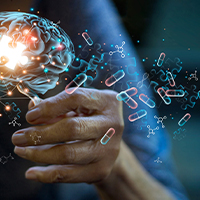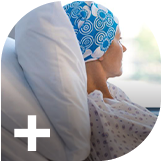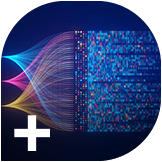The nose knows: How dogs and AI are reinventing cancer detection
Dogs have been sniffing out disease for centuries – often anecdotally, occasionally in controlled studies – but their extraordinary olfactory abilities have rarely been brought into structured clinical use. With up to 40 times more olfactory receptors than humans, their sense of smell is remarkably sensitive, capable of picking up volatile organic compounds (VOCs) in human breath at concentrations as low as one part per trillion.
This same ability to detect minute chemical changes has made dogs indispensable in settings like bomb detection and search and rescue. Now, it’s being explored in an entirely different context: cancer detection.
In the race to catch cancer early, technology often steals the spotlight. However, SpotitEarly, a company working at the intersection of animal behaviour, artificial intelligence (AI), and breath analysis, believes that dogs could play a vital role in non-invasive early detection.
“Only 14% of newly diagnosed cancers in the US are picked up by routine screening,” said SpotitEarly CEO Shlomi Madar. “We have tried as an industry for three decades [to create electronic instruments]. The reason we use dogs is simple. Their sensitivity is three orders of magnitude better than any artificial device.”
The approach is unconventional, but the rationale behind it is sound. When paired with structured training and behavioural monitoring, dogs may offer a new route into one of healthcare’s most persistent gaps: scalable, non-invasive early screening.
Breath in, breath out: Collecting the data
The process begins not in a lab, but at home. Participants are sent a medical-grade N95-style mask and asked to breathe into it for three minutes. Inside that brief window, volatile organic compounds (VOCs) – chemical byproducts of the body’s metabolic processes – are absorbed into the mask’s filtration layers
Compared to other methods of detection, it is a relatively straightforward process, but designing that simplicity took time: “Back then, at the beginning, it was just masks. We would just put a mask inside a small box and they would sniff it. That was enough to ignite our interest and our belief in this,” said Madar.
The early approach worked – but not reliably. “There was a problem, because you contaminate the mask and you're not sure how much sample you have there,” Madar continued. “We had to start building a whole engineering process around it, where we produce gas from the mask. They’re not coming in touch with the mask at any point.”
Today, once the sample is sealed in a ventilated capsule, it can be returned by post, as VOCs remain stable at room temperature, making refrigeration unnecessary. Indeed, the stability of the signal has been tested for up to one year.
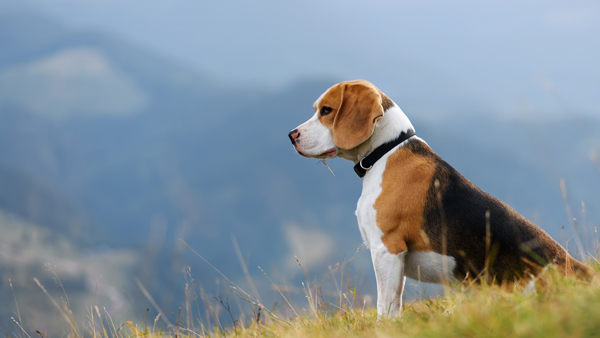
Once in the lab, SpotitEarly’s pack of highly trained dogs bring the biological advantages. “They have both the hardware and the software,” said Madar. “They have hundreds of millions of olfactory receptors and a dedicated olfactory bulb in the brain that help them to process and separate the signal from the noise in real time.”
“If you've ever seen dogs sniffing a piece of cloth from a missing person, who they can detect from miles away – that's your starting point,” he continued. “You can then improve on that with positive reinforcement to get them focused on very minute levels of information like we have with early-stage cancer.”
Beagles have proven particularly well suited to the task – combining powerful scenting ability with a steady temperament and ability to work in short, focused sessions. Each dog works only a few hours a day in carefully managed sessions. The aim is not diagnosis, but signal detection, flagging samples for further analysis based on highly trained and repeatable responses.
Double AI: The science behind the sniff
At the heart of the project are the dogs themselves: trained, monitored, and rewarded for recognising the faintest hints of disease – often long before most humans would notice. But building a consistent, high-accuracy screening method around a dog’s sense of smell demands more than training.
Once a sample has been sniffed, the challenge is interpreting what the dog is telling us – and doing so in a consistent and clinically meaningful way. This is where the second half of what Madar calls the “double AI” model comes into play: artificial intelligence that observes and decodes animal intelligence.
Each interaction is captured in detail. “We monitor the dogs with multiple sensors,” explained Madar. “Accelerometers, heart rate monitors, cameras on top of the lab and inside the sniffing ports – all that data feeds into an algorithm that helps us understand what’s really happening.” These signals are fed into a machine learning algorithm trained to distinguish meaningful reactions from background behaviour.
“There are subtle cues that we can’t reliably spot with the naked eye,” he continued. “Maybe the dogs walk faster, or their heart rate changes, or they stay in the gesture for two seconds instead of three. If you can pick up on all those signals and feed them into an algorithm, you can actually increase the sensitivity — or the likelihood of accurate interpretation.”
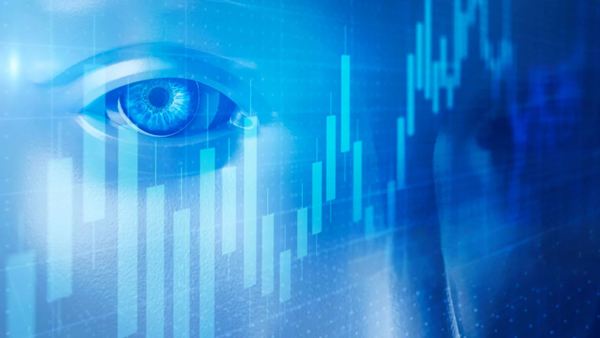
Each breath sample is assessed by several dogs, with the AI helping to weigh the confidence of their responses across multiple variables. This layered redundancy is key to the system’s accuracy: “Every sample is being sniffed multiple times by the entire pack. Then, all this information is fed into the algorithm to decipher which gesture was a true gesture,” said Madar.
This model – using animal intelligence for detection and artificial intelligence for analysis – helps minimise human bias and subjectivity. While handler expertise is still required, the final interpretation relies on cross-validated behavioural data, not on individual intuition.
“We're not trying to replace diagnostics,” Madar noted. “But we do want to create a system that’s consistent, reproducible, and capable of detecting early signals that other methods might miss – and to do that, you need both sides of the intelligence working together.”
From home to lab: Scaling a nose-led screening model
The practical question facing any novel screening approach – especially one involving animals – is whether it can scale. For a system built on canine detection, SpotitEarly’s model is surprisingly streamlined. Breath samples are collected using a simple N95-style mask worn at home for three minutes, then sealed and posted back to the lab. The volatile organic compounds (VOCs) remain stable during transport, requiring no refrigeration or special handling.
The dogs, primarily beagles, are trained over four to six months using positive reinforcement methods. Each sample is assessed multiple times by different dogs, with their behavioural and physiological responses captured and interpreted by the AI system. According to Madar, the lab can process up to a million samples per year – a throughput on par with many high-volume diagnostic labs.
That early data came from a small proof-of-concept collaboration, where trained dogs sniffed breath samples from cancer patients. The setup was rudimentary – simple masks and basic sample handling – but the dogs consistently gestured toward the positive samples. Encouraged by those results, the team began refining the approach, developing protocols for mask design, sample stability, and training regimens.
The next step was formal clinical validation. A multi-centre, double-blind study involving 1,400 participants in Israel demonstrated 94.8% sensitivity and specificity – with even higher accuracy at earlier stages of disease. Each sample was anonymised, and predictions were submitted to a third party with access to the clinical outcomes. “You’re measured against data you don’t control,” said Madar. “It’s the only way to prove it works.”
Key to the model’s accuracy is redundancy. Every breath sample is sniffed by multiple dogs, and every interaction is monitored using physiological sensors and video tracking. The resulting data – on posture, timing, movement, and heart rate – is analysed using machine learning to detect patterns no human observer could reliably interpret alone. This double-blind, multi-layered process removes individual bias and increases the confidence of each result.
“The dogs aren’t working in isolation,” Madar explained. “It’s a team effort – both among the animals and between biology and technology.”
While the idea still prompts raised eyebrows in some clinical circles, interest is growing. The team is now preparing to expand trials into the US to assess how the model performs in a larger, demographically relevant population. Madar, once sceptical himself, now sees the model not as a replacement for traditional diagnostics, but as a supplement – particularly for people unwilling or unable to access more invasive screening.
“At first, I thought, why introduce this level of noise?” he admitted. “But once I saw the results – around 94% sensitivity and specificity even in the interim data – I understood that there was something strong here that could only be improved.”
The future of a nose-led approach
As interest in breath-based diagnostics grows, the question is no longer whether dogs can detect cancer – but whether that ability can be harnessed in a way that is scalable, repeatable, and clinically meaningful.
In early studies, the dogs have demonstrated stronger detection rates at earlier stages of disease – a crucial factor in any screening tool. Madar believes that capability could help fill a persistent gap, particularly among people who are reluctant to engage with more invasive procedures. “Some of those run-of-the-mill tests are quite invasive,” he said. “Just think about colonoscopy. Mammograms and ultrasounds are not that comfortable. I think this could be a good supplement to the flow of cancer early detection.”
The potential ease and comfort of the approach may prove important: “You breathe, you post it, and you wait a few days. For a lot of people, that level of simplicity might be what makes early detection possible.”
“If you detect cancer early enough, you can improve the survival rate to up to 99% for multiple cancers,” Madar explained. “I think it's great that we have new treatments, but at the end of the day, if you can avoid it or use some minor treatment and get your life back, that would be the ultimate goal.”
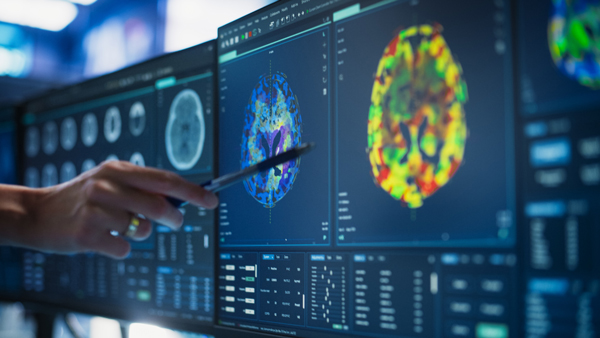
At present, the system is being explored as a pre-screening tool – a first step that could trigger more targeted diagnostics. The company reports that a single laboratory, working with a trained team of dogs, can process up to one million samples per year. While this capacity remains to be independently validated at scale, it reflects the intention to move beyond proof-of-concept into something operationally viable.
If successful, the underlying model could also be adapted for other diseases. As long as a condition produces a detectable VOC signature, the framework – sample collection, trained detection, and machine analysis – could, in theory, be applied elsewhere. But turning that theory into practice will require evidence, not just ambition.
Madar remains pragmatic about the system’s limitations. While AI capabilities are advancing rapidly, the real constraint lies in the physical sensors used to detect VOCs without dogs. “The real constraint isn’t the AI,” he said. “It’s the sensitivity of the sensors. Until that gap closes, the dogs are still the best detectors we have.”
In a field where time is everything, early detection remains the most powerful tool available. And until human-made technologies catch up, the solution may still lie – quite literally – with man’s best friend.
About the interviewee
Shlomi Madar is CEO of SpotitEarly. A molecular biologist by training, he is a healthcare and biotech leader with more than 15 years of experience and a PhD in Cancer Research from the Weizmann Institute of Science.
About the author
Eloise McLennan is the editor for pharmaphorum’s Deep Dive magazine. She has been a journalist and editor in the healthcare field for more than five years and has worked at several leading publications in the UK.
Supercharge your pharma insights: Sign up to pharmaphorum's newsletter for daily updates, weekly roundups, and in-depth analysis across all industry sectors.
Click on either of the images below for more articles from this edition of Deep Dive: Research and Development 2025





